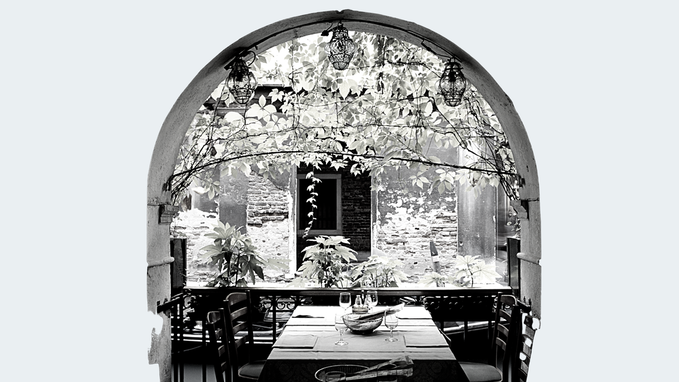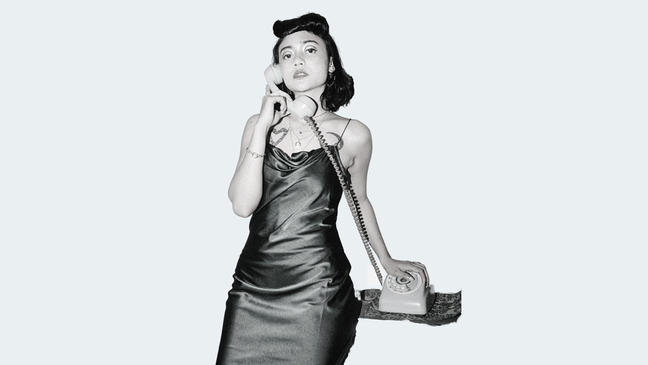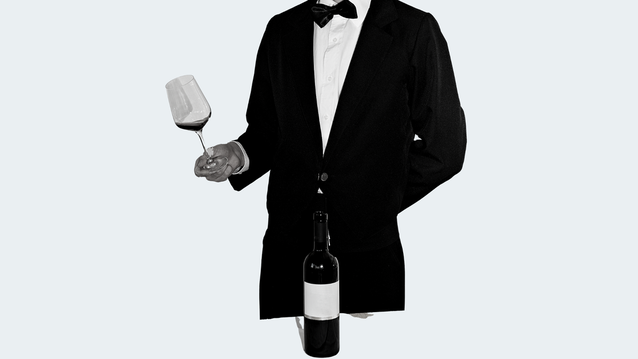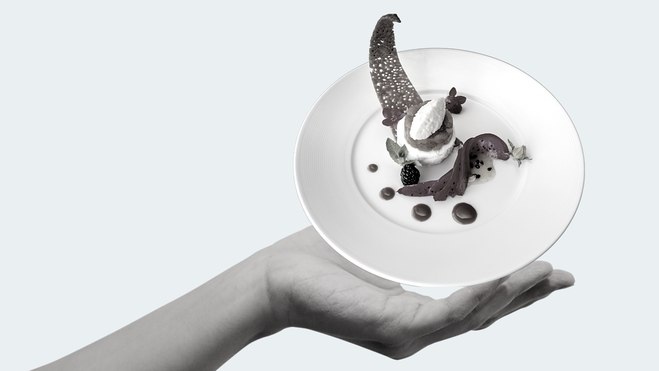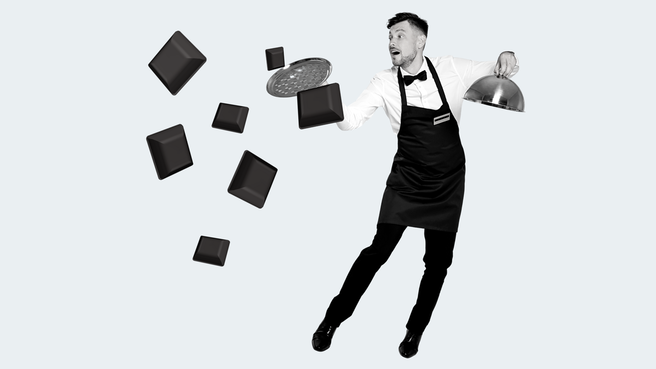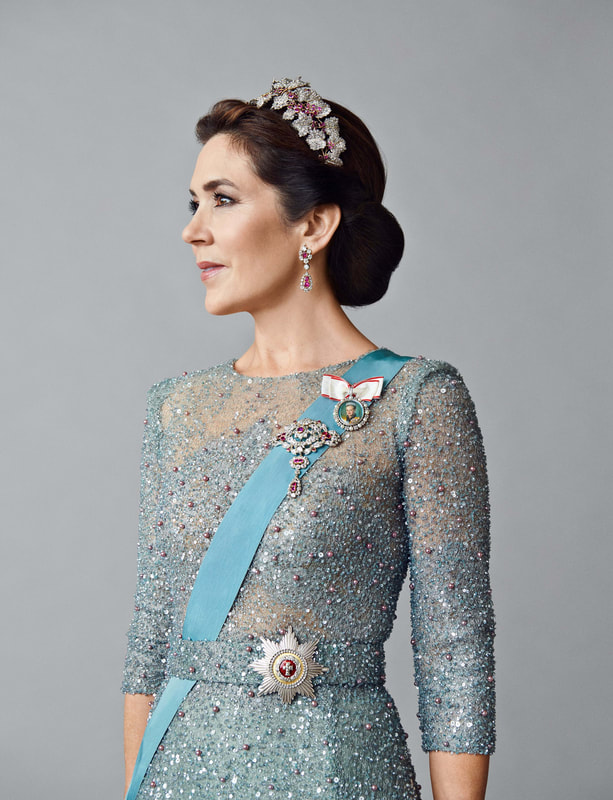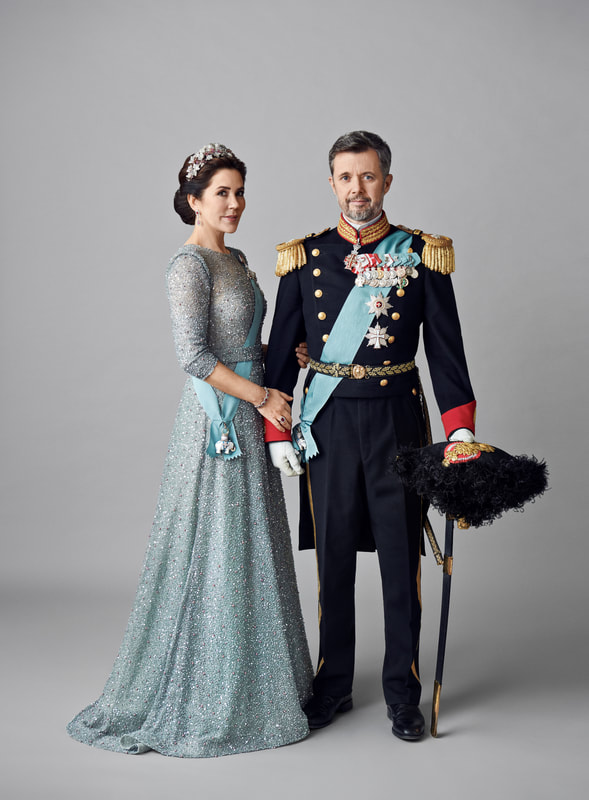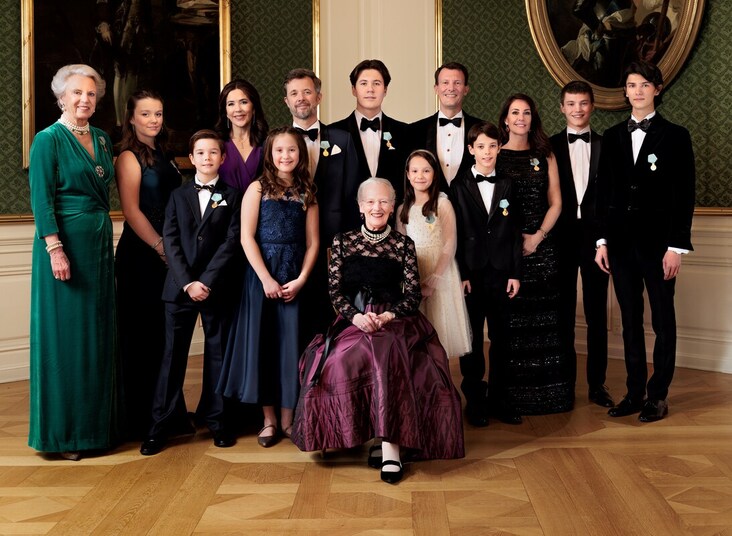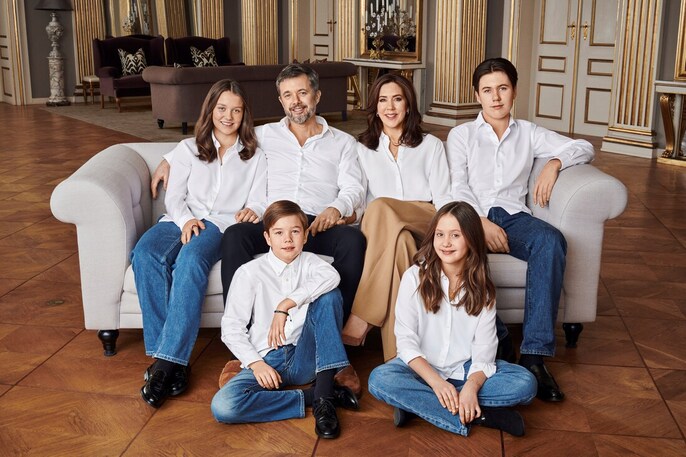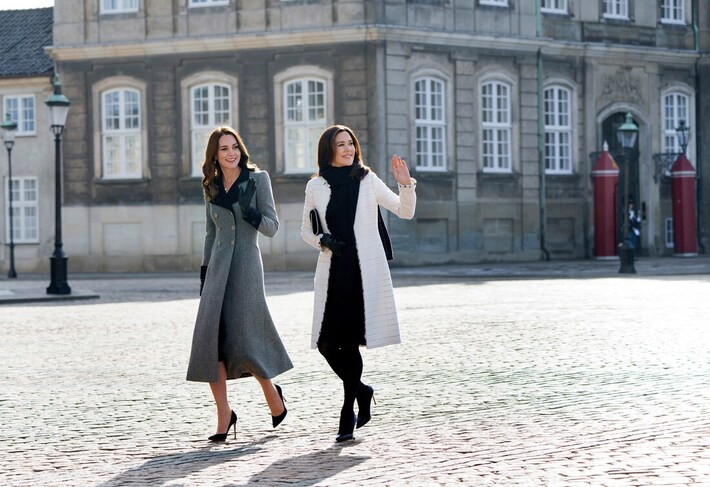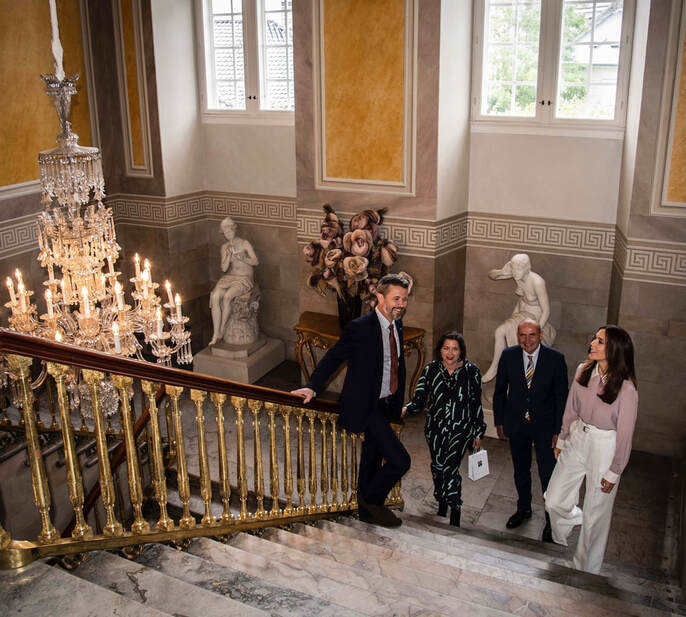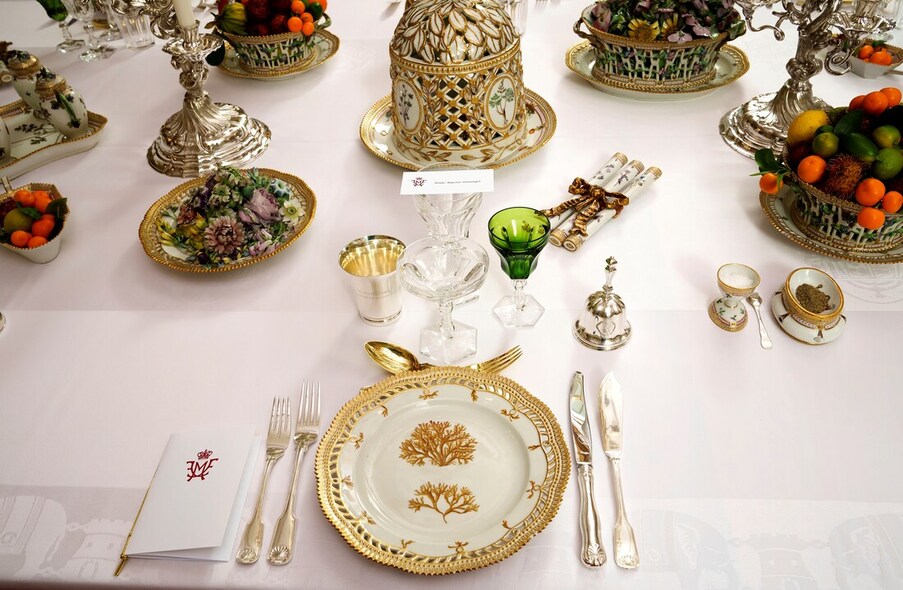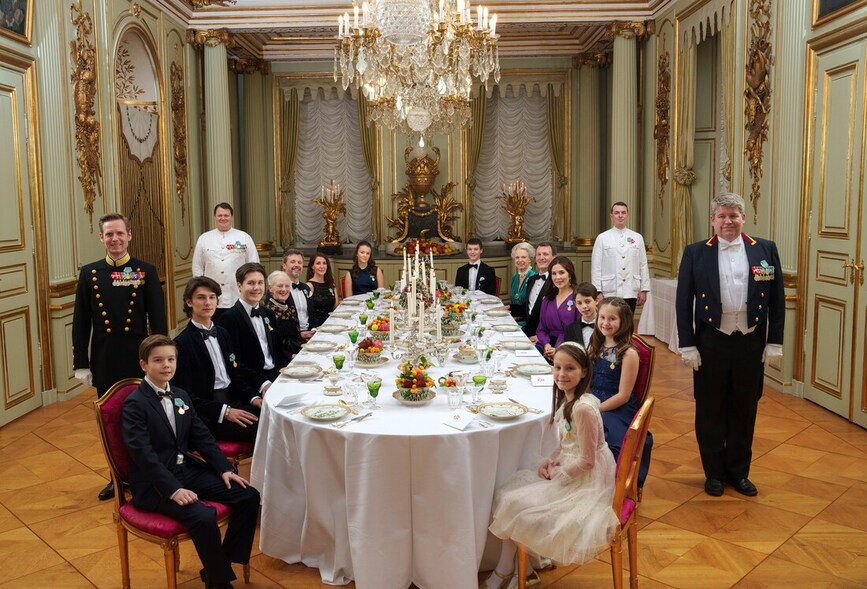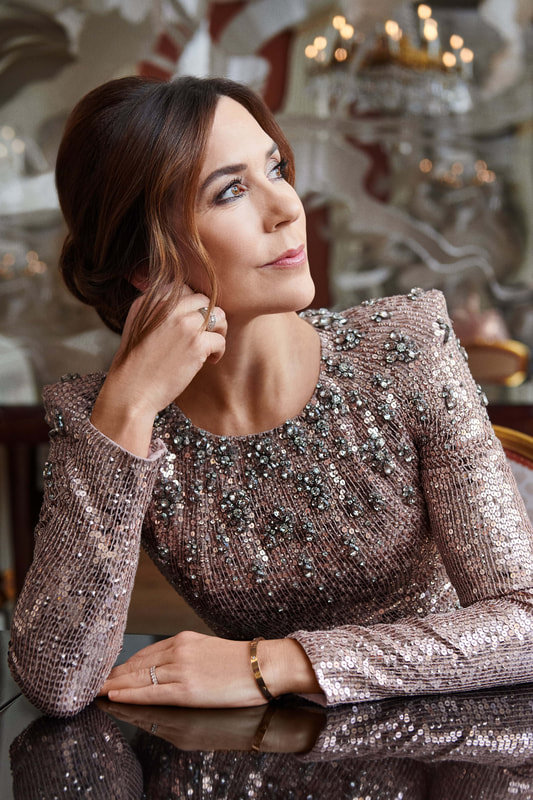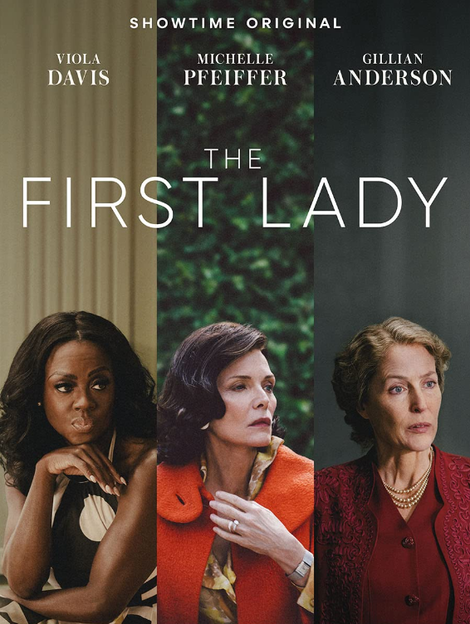Interview with the Prestigious Doctor Ashok Gupta
Mumbai | India | June 2024
Through a dear friend, I was introduced to an extraordinary figure in Indian society, Dr. Ashok Gupta. From humble beginnings in a village in inner India, Dr. Gupta has risen to become a celebrated and decorated plastic surgeon. He selflessly volunteers his time and resources to help the underprivileged, including survivors of wars, terrorist attacks, major accidents, to those with birth defects, as well as Bollywood stars and Hindi TV serial personalities. His contributions have been recognised by numerous governments, Gulf royalty, and international film festivals.
Dr. Ashok Gupta began his career at Government Medical College in Nagpur, moved on to Grant Medical College in Mumbai, and then advanced his training in the United Kingdom at The Royal College of Surgeons, in Scotland. I wanted to interview this prestigious plastic surgeon to gain insights from his 50 years of service, learn about his views on business etiquette and protocols, and gather tips he could offer to aspiring professionals.
Governmental and Royal Protocol
Before becoming the recipient of “Sheikh Hamdan International Award” in 2010, or meeting Gulf royalty in completely different circumstances, the royal protocol officer was asked to provide invaluable information in how one should conduct oneself. According to Dr. Gupta, when meeting Gulf royalty, one should “reflect respect for their culture, traditions, and customs.” One should also show appreciation for an “occasion's significance and highlight one's understanding of royal etiquette.” I would have to agree. Understanding and adhering to royal protocols not only demonstrates respect but also highlights one’s maturity and cultural sensitivity. Here are some points of protocol training that Dr Gupta learned and passed on to me in our talk:
Through a dear friend, I was introduced to an extraordinary figure in Indian society, Dr. Ashok Gupta. From humble beginnings in a village in inner India, Dr. Gupta has risen to become a celebrated and decorated plastic surgeon. He selflessly volunteers his time and resources to help the underprivileged, including survivors of wars, terrorist attacks, major accidents, to those with birth defects, as well as Bollywood stars and Hindi TV serial personalities. His contributions have been recognised by numerous governments, Gulf royalty, and international film festivals.
Dr. Ashok Gupta began his career at Government Medical College in Nagpur, moved on to Grant Medical College in Mumbai, and then advanced his training in the United Kingdom at The Royal College of Surgeons, in Scotland. I wanted to interview this prestigious plastic surgeon to gain insights from his 50 years of service, learn about his views on business etiquette and protocols, and gather tips he could offer to aspiring professionals.
Governmental and Royal Protocol
Before becoming the recipient of “Sheikh Hamdan International Award” in 2010, or meeting Gulf royalty in completely different circumstances, the royal protocol officer was asked to provide invaluable information in how one should conduct oneself. According to Dr. Gupta, when meeting Gulf royalty, one should “reflect respect for their culture, traditions, and customs.” One should also show appreciation for an “occasion's significance and highlight one's understanding of royal etiquette.” I would have to agree. Understanding and adhering to royal protocols not only demonstrates respect but also highlights one’s maturity and cultural sensitivity. Here are some points of protocol training that Dr Gupta learned and passed on to me in our talk:
Clothing and Grooming
Cultural Etiquette
Addressing The Royal Family
Depending on which King, Shaikh, Amir, Sultan or Crown Prince you may meet or write to, always seek the direction of the royal protocol office. There you will receive the correct way to address and correspond with the Royal Family. For instance, you may receive information such as the following when verbally addressing a Crown Prince from Saudia Arabia, Jordon or Morocco:
The takeaway here is undeniable: Dr. Gupta’s adherence to these protocols and his reflections on their importance, serve as a guide for anyone seeking to engage respectfully and appropriately with any royalty. His experience underscores the value of cultural etiquette in building respectful and meaningful connections across different societies, which he still maintains today.
- Avoid wearing black, it is a colour associated with mourning in Gulf culture.
- Dress formally for meetings with royalty and avoid all attire that may be considered casual.
- Wearing clothing with images or text that may be offensive to Islamic beliefs is considered highly disrespectful. Gulf royal protocol emphasizes modesty, elegance, and refinement in clothing choices.
- Arabian culture places great emphasis on cleanliness, personal hygiene and foremost smells. Body odour is looked upon, or smelled upon, unfavourably.
- Guests meeting Gulf royalty should ensure their hair is well-groomed and trimmed, their nails are clean and neat, and their overall appearance is tidy.
- Women should opt for conservative clothing that covers their arms, legs, and shoulders, while avoiding tight-fitting outfits.
- Women must cover their hair and wear an abaya, which is a loose-fitting black cloak over modest clothing.
Cultural Etiquette
- Avoid pointing the soles of your feet at anyone.
- Use excellent posture and use minimal gestures, keeping hands and feet steady.
- Avoiding physical contact unless initiated by the royal family member.
- Refrain from taking pictures without permission.
- Show respect by standing up when they enter the room.
- Avoiding direct eye contact unless invited.
- Never turn your back on any member of the royal family.
- Use your right hand to reciprocate a handshake offered to you.
- Use formal behaviour as opposed to undue familiarity.
Addressing The Royal Family
Depending on which King, Shaikh, Amir, Sultan or Crown Prince you may meet or write to, always seek the direction of the royal protocol office. There you will receive the correct way to address and correspond with the Royal Family. For instance, you may receive information such as the following when verbally addressing a Crown Prince from Saudia Arabia, Jordon or Morocco:
- First instance: ‘Your Royal Highness’
- Thereafter in conversation: ‘Sir’
- In conversation: ‘His Royal Highness’
The takeaway here is undeniable: Dr. Gupta’s adherence to these protocols and his reflections on their importance, serve as a guide for anyone seeking to engage respectfully and appropriately with any royalty. His experience underscores the value of cultural etiquette in building respectful and meaningful connections across different societies, which he still maintains today.
Succeeding in a Business Environment
He recalled an experience during his time at the surgeon's college when a lecturer observed him carefully cleaning a wound, suturing it precisely, and neatly dressing it. The lecturer told him he had an aptitude as a surgeon and encouraged him to continue. Dr. Gupta used this feedback as a building block for how he would provide care to all his patients. This approach is two-fold: first, when performing work, he ensures it is done well and with patience; second, he recognises that the patient has entrusted him with their care in which he is thankful for their trust.
The takeaway here is important: Whether working for yourself or someone else, approach your work with zeal, passion, and a commitment to excellence. Strive to give over 100% to your clients or customers, as their satisfaction and trust will be your most valuable endorsements—more impactful than any review on Google or Trustpilot.
Here are Dr. Gupta's three key guidelines for succeeding in a business environment:
He recalled an experience during his time at the surgeon's college when a lecturer observed him carefully cleaning a wound, suturing it precisely, and neatly dressing it. The lecturer told him he had an aptitude as a surgeon and encouraged him to continue. Dr. Gupta used this feedback as a building block for how he would provide care to all his patients. This approach is two-fold: first, when performing work, he ensures it is done well and with patience; second, he recognises that the patient has entrusted him with their care in which he is thankful for their trust.
The takeaway here is important: Whether working for yourself or someone else, approach your work with zeal, passion, and a commitment to excellence. Strive to give over 100% to your clients or customers, as their satisfaction and trust will be your most valuable endorsements—more impactful than any review on Google or Trustpilot.
Here are Dr. Gupta's three key guidelines for succeeding in a business environment:
- Thoroughly research the establishment and its work culture.
- Commit to understanding the core principles of the business.
- Align with the goals of the business at hand, and actively contribute value.
Dressing Professionally
While speaking with Dr. Gupta, I noticed on two occasions that he was dressed professionally. During the interview, he wore doctor's scrubs with his name and practice embroidered in red. Why is this important? Trust and confidence. If you were looking for a plastic surgeon to perform life-altering work, would you trust someone wearing sneakers, a t-shirt, and jeans, or a surgeon in business attire or a medical uniform? I know which one I would choose.
This brings to mind Dr. Gupta’s account of a young surgeon who was to be interviewed by a doctorate board in Mumbai. The young surgeon arrived in casual attire and was not allowed to enter the interview room because his choice of attire was deemed incorrect and unprofessional. He was subsequently told to reapply at a later date.
Dr. Gupta, who practiced in Bahrain for some time, shared an anecdote about one of his patients, an American woman. During their consultation, she remarked on the importance of a woman’s and man's presentation, specifically mentioning the condition of his shoes. What did she mean? She was emphasising the significance of the little details in a man's overall presentation. Both men and women notice non-verbal cues such as body language, dress, and grooming. Ensuring small details, like removing dust from shoes and keeping the back of the shoes clean, matters. Should we worry about the back of our shoes and clothing? The answer is, “Yes!”
The takeaway here is clear: The way you present yourself, including professional attire and attention to small details, significantly impacts trust and confidence in your abilities. Whether in an interview or a consultation, demonstrating professionalism through your appearance is crucial for making a positive impression.
Here are Dr. Gupta's three important pointers in dressing professionally:
While speaking with Dr. Gupta, I noticed on two occasions that he was dressed professionally. During the interview, he wore doctor's scrubs with his name and practice embroidered in red. Why is this important? Trust and confidence. If you were looking for a plastic surgeon to perform life-altering work, would you trust someone wearing sneakers, a t-shirt, and jeans, or a surgeon in business attire or a medical uniform? I know which one I would choose.
This brings to mind Dr. Gupta’s account of a young surgeon who was to be interviewed by a doctorate board in Mumbai. The young surgeon arrived in casual attire and was not allowed to enter the interview room because his choice of attire was deemed incorrect and unprofessional. He was subsequently told to reapply at a later date.
Dr. Gupta, who practiced in Bahrain for some time, shared an anecdote about one of his patients, an American woman. During their consultation, she remarked on the importance of a woman’s and man's presentation, specifically mentioning the condition of his shoes. What did she mean? She was emphasising the significance of the little details in a man's overall presentation. Both men and women notice non-verbal cues such as body language, dress, and grooming. Ensuring small details, like removing dust from shoes and keeping the back of the shoes clean, matters. Should we worry about the back of our shoes and clothing? The answer is, “Yes!”
The takeaway here is clear: The way you present yourself, including professional attire and attention to small details, significantly impacts trust and confidence in your abilities. Whether in an interview or a consultation, demonstrating professionalism through your appearance is crucial for making a positive impression.
Here are Dr. Gupta's three important pointers in dressing professionally:
- Think about where you are going and who you are planning to meet.
- Dress accordingly, taking time before to evaluate the clothing.
- Add a touch of individuality and panache to level-up your entire outfit.
Cross-Cultural Communication
Whilst speaking with and interviewing Dr. Gupta, I noticed several things about his demeanour. His delivery is caring, methodical, and purposeful. He is always ready to explain the answers to any questions you may have, without making you feel ignorant for asking, which inspired ease and made me feel instantly relaxed in his presence. And he smiled!
However, this was not always the case. Let me explain. Fresh out of India and practicing in the United Kingdom under the guidance of his college, Dr. Gupta encountered a 15-16-year-old female patient seeking plastic surgery on her nose. One of the standard questions is, "What medication are you currently taking?" To his shock, she mentioned she was taking contraceptive pills. The observing lecturer took him aside and stated kindly yet firmly that he needed to understand the cultural system of the country. This became the foundation for his doctor-patient behaviour, emphasising the importance of building effective communication strategies and learning about cultural etiquette.
The takeaway here is paramount and two-fold: Effective communication and cultural awareness are essential for building trust and confidence in any doctor-patient relationship. Dr. Gupta’s experience highlights the importance of understanding cultural contexts and honing interpersonal skills to provide compassionate and competent care.
Here are Dr. Gupta's four important pointers in cultural communication:
Whilst speaking with and interviewing Dr. Gupta, I noticed several things about his demeanour. His delivery is caring, methodical, and purposeful. He is always ready to explain the answers to any questions you may have, without making you feel ignorant for asking, which inspired ease and made me feel instantly relaxed in his presence. And he smiled!
However, this was not always the case. Let me explain. Fresh out of India and practicing in the United Kingdom under the guidance of his college, Dr. Gupta encountered a 15-16-year-old female patient seeking plastic surgery on her nose. One of the standard questions is, "What medication are you currently taking?" To his shock, she mentioned she was taking contraceptive pills. The observing lecturer took him aside and stated kindly yet firmly that he needed to understand the cultural system of the country. This became the foundation for his doctor-patient behaviour, emphasising the importance of building effective communication strategies and learning about cultural etiquette.
The takeaway here is paramount and two-fold: Effective communication and cultural awareness are essential for building trust and confidence in any doctor-patient relationship. Dr. Gupta’s experience highlights the importance of understanding cultural contexts and honing interpersonal skills to provide compassionate and competent care.
Here are Dr. Gupta's four important pointers in cultural communication:
- Speak clearly and slowly, breaking down your sentences for better understanding.
- Actively listen by summarising anything questionable and ask questions to confirm your comprehension.
- Take turns speaking in short exchanges to allow for processing and response.
- Smiling is widely recognised across cultures, when the smiles are genuine.
Giving Back to the Community
After researching Dr. Ashok Gupta's website, I was impressed by his pro bono surgeries for war victims, Mumbai shooting survivors, acid attack victims, accident victims in remote areas, and more. During the interview, I asked him why he dedicated time to these cases when he could focus on building a thriving practice. Dr. Gupta simply explained his motivation: "It's about giving back, generating goodwill, and expressing gratitude for the opportunity to use my skills."
Here are some powerful examples of his impact:
A child found in the Varanasi jungle with a severe animal bite, received surgeries from Dr. Gupta at ages 5, 10, 15, showcasing the long-term care provided. A truck accident victim, who required 40 hours of surgery, received his care with Dr. Gupta leading a team of 7 doctors. Dr. Gupta described losing track of time due to his intense focus, but the surgery's success allowed the man to marry and start a family. These stories exemplify the profound impact Dr. Gupta's work has on people's lives. What can we learn from this?
Natures law on equal returns:
Dr. Gupta's story highlights the power of pro bono work that professionals can leverage their skills to significantly improve lives and communities. Giving back generates personal fulfillment and strengthens the social fabric, as seen by Dr. Gupta's dedication and the positive outcomes for his patients.
Conclusion
I hope that you enjoyed reading this, as much I enjoyed interviewing Dr Ashok Gupta. It was a privilege to meet such a talented individual who is not only passionate about his field but also dedicated to sharing his knowledge with aspiring professionals and recent graduates. His vast experience is truly remarkable!
After researching Dr. Ashok Gupta's website, I was impressed by his pro bono surgeries for war victims, Mumbai shooting survivors, acid attack victims, accident victims in remote areas, and more. During the interview, I asked him why he dedicated time to these cases when he could focus on building a thriving practice. Dr. Gupta simply explained his motivation: "It's about giving back, generating goodwill, and expressing gratitude for the opportunity to use my skills."
Here are some powerful examples of his impact:
A child found in the Varanasi jungle with a severe animal bite, received surgeries from Dr. Gupta at ages 5, 10, 15, showcasing the long-term care provided. A truck accident victim, who required 40 hours of surgery, received his care with Dr. Gupta leading a team of 7 doctors. Dr. Gupta described losing track of time due to his intense focus, but the surgery's success allowed the man to marry and start a family. These stories exemplify the profound impact Dr. Gupta's work has on people's lives. What can we learn from this?
Natures law on equal returns:
Dr. Gupta's story highlights the power of pro bono work that professionals can leverage their skills to significantly improve lives and communities. Giving back generates personal fulfillment and strengthens the social fabric, as seen by Dr. Gupta's dedication and the positive outcomes for his patients.
Conclusion
I hope that you enjoyed reading this, as much I enjoyed interviewing Dr Ashok Gupta. It was a privilege to meet such a talented individual who is not only passionate about his field but also dedicated to sharing his knowledge with aspiring professionals and recent graduates. His vast experience is truly remarkable!
Etiquette Gives You Confidence: The Benefits of Etiquette
"I want to feel more confident when conversing and interacting with others.
I want to use etiquette's advantages in my personal and working circles.
I want to teach my child to show mindfulness in how they present.
I'm looking for that extra polish to enhance my professional and personal life.
Looking for an experience where I can grow and continue on my journey.
I want to change my current ways of doing things.
I need someone to positively reinforce manners to my child that I value."
I want to use etiquette's advantages in my personal and working circles.
I want to teach my child to show mindfulness in how they present.
I'm looking for that extra polish to enhance my professional and personal life.
Looking for an experience where I can grow and continue on my journey.
I want to change my current ways of doing things.
I need someone to positively reinforce manners to my child that I value."
Have you heard yourself stating these things quietly to yourself or with friends over a coffee? I did when I was younger and inexperienced. I always thought etiquette schools were for royalty, celebrities and their children or finishing school for the bourgeoisie. Well, today, etiquette schools are more attuned to society's modern needs, focusing on mindfulness, professionalism and confidence.
HOW DOES ETIQUETTE BENEFIT YOU?
You've probably heard that using etiquette is good for you, but you may not be acquainted with the many ways that using etiquette can improve your confidence and help you deal with most situations that can come your way. In fact, there are at least seven benefits. Some benefits are noticed right away, which can assure you that knowing the principles of etiquette for social and business matters, you are making a good choice.
Researchers have uncovered that people who are more aware of intrinsic motivations-internal motivations are more likely to frequently include etiquette in everyday activities, gaining satisfaction. Here's a list of the immediate benefits many notices.
Using etiquette... As described by Pier Forni, Professor at Johns Hopkins University in Baltimore, "the rules of good manners are the traffic lights of human interaction, they make it so that we don’t crash into one another in everyday behavior."
DID YOU KNOW THAT ETIQUETTE THAT LASTS A LIFETIME!
The use of etiquette or protocol goes beyond what to do when meeting an important dignitary or using your manners with the new in-laws. According to Sir Asher Joel explain “Protocol and procedure is not, after all, a static process, but one which reflects with great accuracy the changing nature of a community and its practices.”
HOW DOES ETIQUETTE BENEFIT YOU?
You've probably heard that using etiquette is good for you, but you may not be acquainted with the many ways that using etiquette can improve your confidence and help you deal with most situations that can come your way. In fact, there are at least seven benefits. Some benefits are noticed right away, which can assure you that knowing the principles of etiquette for social and business matters, you are making a good choice.
Researchers have uncovered that people who are more aware of intrinsic motivations-internal motivations are more likely to frequently include etiquette in everyday activities, gaining satisfaction. Here's a list of the immediate benefits many notices.
Using etiquette... As described by Pier Forni, Professor at Johns Hopkins University in Baltimore, "the rules of good manners are the traffic lights of human interaction, they make it so that we don’t crash into one another in everyday behavior."
- Displaying etiquette helps with unity, respect and dignity.
- Assists in building strong relationships.
- Understanding etiquette can aid people to avoid negative situations.
- Encourages cross-cultural awareness.
- It provides a positive impact on people around you.
- Builds confidence and self-esteem, and awareness.
- Etiquette is a guide to managing social and professional connections.
DID YOU KNOW THAT ETIQUETTE THAT LASTS A LIFETIME!
The use of etiquette or protocol goes beyond what to do when meeting an important dignitary or using your manners with the new in-laws. According to Sir Asher Joel explain “Protocol and procedure is not, after all, a static process, but one which reflects with great accuracy the changing nature of a community and its practices.”
- Etiquette is elegance, grace and is timeless.
- Knowing manners will be used by my child when I am not there.
- I can give my children a head-start in life and teach them what I have been taught.
- Etiquette is interpersonal relationships, self-assurance, and trust-building.
- Even after I leave, I have left the best impression that will be remembered in the right way.
- Knowing the principles behind etiquette makes life easier.
- Courtesy is about mindfulness and has a real purpose.
- It eliminates the guesswork and improves social and business skills.
- Assists in avoiding time-consuming mistakes and online misinformation.
- Streamlines your learning process, building social and professional confidence.
- It involves hospitality and generosity towards others.
Understanding etiquette, research has shown, that when used it has "universal appeal... simplifies complicated situations....it helps us connect with others, increases our tolerance for challenging situations...and inspires us to ‘go the distance’." Corazzini et al., 2005
Now that you know how etiquette can help you and that it is a life skill, you can adjust to any situation. Will you go the distance and understand more about etiquette?
Now that you know how etiquette can help you and that it is a life skill, you can adjust to any situation. Will you go the distance and understand more about etiquette?
How Does Fine Dining Work: Will It Be a Michelin Style?
On most people’s bucket lists is visiting an exotic location or a Michelin-starred restaurant. The Michelin guidebook has been luring hungry travellers to fine dining establishments for over ninety years. Michelin invokes the feeling of being transported to the annual Academy Awards, a billionaire playground, or a chance to meet a celebrated MasterChef.
Visiting one or more of these restaurants worldwide is a pleasure and a panic! Why? Being confronted with different types of cutlery, glasses or a modernistic table setting. On the outside, you may be smiling, but hell has broken loose on the inside. Here is a succession of tips and tricks to keep you looking like-you-know-what-you-are-doing and looking sophisticated while you dine.
Visiting one or more of these restaurants worldwide is a pleasure and a panic! Why? Being confronted with different types of cutlery, glasses or a modernistic table setting. On the outside, you may be smiling, but hell has broken loose on the inside. Here is a succession of tips and tricks to keep you looking like-you-know-what-you-are-doing and looking sophisticated while you dine.
How Does Fine Dining Work?
Restaurants such as Sukiyabashi Jiro, Tokyo, Japan or Talula’s Table, Pennsylvania, USA, are so heavily booked that there is a waiting period of months, not days, for your reservation. Today many restaurants will have an online or call-in service to book a table. Do this in advance rather than chancing it and turning up expecting a table is magically made available for your party of five. Just remember, if you are with Lady Gaga, perhaps a table will be whisked out of nowhere and placed in the best part of the restaurant. A good restaurant in the booking phase will ask about allergies, most importantly.
Address staff by their name– famous author Dale Carnegie stated that “a person’s name is to him or her the sweetest and most important sound in any language.” Why not use your maître d’ and server's name to get that extra service? When someone uses my name, I feel elated and want to go out on a limb for that person.
Adding to the ambiance, dressing appropriately for fine dining shows respect for the establishment and the experience. It doesn't have to be stuffy suits and ball gowns every time. However, aim for a polished look. The key is to look put-together and avoid overly casual attire like ripped jeans or t-shirts. Remember, feeling confident in your attire allows you to fully relax.
Restaurants such as Sukiyabashi Jiro, Tokyo, Japan or Talula’s Table, Pennsylvania, USA, are so heavily booked that there is a waiting period of months, not days, for your reservation. Today many restaurants will have an online or call-in service to book a table. Do this in advance rather than chancing it and turning up expecting a table is magically made available for your party of five. Just remember, if you are with Lady Gaga, perhaps a table will be whisked out of nowhere and placed in the best part of the restaurant. A good restaurant in the booking phase will ask about allergies, most importantly.
Address staff by their name– famous author Dale Carnegie stated that “a person’s name is to him or her the sweetest and most important sound in any language.” Why not use your maître d’ and server's name to get that extra service? When someone uses my name, I feel elated and want to go out on a limb for that person.
Adding to the ambiance, dressing appropriately for fine dining shows respect for the establishment and the experience. It doesn't have to be stuffy suits and ball gowns every time. However, aim for a polished look. The key is to look put-together and avoid overly casual attire like ripped jeans or t-shirts. Remember, feeling confident in your attire allows you to fully relax.
What is Fine Dining Etiquette?
A casual dining restaurant generally will be a large room or two, and upon entry, you will pass an exposed cash register with the kitchen behind and a restroom not too far away. Purpose-made restaurants will have an entrance where the maître d’ will meet you with a cloakroom and a small reception desk as you walk in. Casual dining, you will be seated straight away with a drinks order taken; conversely high-end dining, you may start your journey at the bar and given a menu to peruse before being escorted to your table.
Once seated, in your casual dining experience you may be confronted with paper serviettes neatly squeezed into a stainless dispenser. Nothing shouts ‘luxury’ as a crisp, starched linen napkins! Once seated swiftly take the napkin from the place setting, unfolding without showing other diners you have attended ‘Running Of The Bull's’ in Pamplona, Spain, sliding it on your lap with the crease facing your stomach area.
Your server may give you slices of bread or rolls. This is not the time to fill yourself up on bread and butter or make a sandwich. A good restaurant will have a plate relegated for this crusty item. The etiquette for bread is that it should never leave the plate instead of breaking bread as you butter each piece with your fingers, which is the only time to handle food without cutlery.
Silverware should be used correctly when dining in casual or high-end restaurants. For flawless service, your server should pair the correct silver to your selected menu. If you have chosen steak, a steak knife will accompany. Crab - seafood pick, oyster – an oyster fork will be added to your setting.
A casual dining restaurant generally will be a large room or two, and upon entry, you will pass an exposed cash register with the kitchen behind and a restroom not too far away. Purpose-made restaurants will have an entrance where the maître d’ will meet you with a cloakroom and a small reception desk as you walk in. Casual dining, you will be seated straight away with a drinks order taken; conversely high-end dining, you may start your journey at the bar and given a menu to peruse before being escorted to your table.
Once seated, in your casual dining experience you may be confronted with paper serviettes neatly squeezed into a stainless dispenser. Nothing shouts ‘luxury’ as a crisp, starched linen napkins! Once seated swiftly take the napkin from the place setting, unfolding without showing other diners you have attended ‘Running Of The Bull's’ in Pamplona, Spain, sliding it on your lap with the crease facing your stomach area.
Your server may give you slices of bread or rolls. This is not the time to fill yourself up on bread and butter or make a sandwich. A good restaurant will have a plate relegated for this crusty item. The etiquette for bread is that it should never leave the plate instead of breaking bread as you butter each piece with your fingers, which is the only time to handle food without cutlery.
Silverware should be used correctly when dining in casual or high-end restaurants. For flawless service, your server should pair the correct silver to your selected menu. If you have chosen steak, a steak knife will accompany. Crab - seafood pick, oyster – an oyster fork will be added to your setting.
To Michelin Or Not To Michelin
How does a restaurant become listed in the Michelin Guidebook? A team of inspectors book anonymously and follow a comprehensive list of topics from the client to the culinary experience. After the field test, these incognito inspectors gather to present their findings as well to consider who will be awarded a Michelin Guide star rating:
How does a restaurant become listed in the Michelin Guidebook? A team of inspectors book anonymously and follow a comprehensive list of topics from the client to the culinary experience. After the field test, these incognito inspectors gather to present their findings as well to consider who will be awarded a Michelin Guide star rating:
One star: A very good restaurant in its category.
Two stars: Excellent cooking, worth a detour.
Three stars: Exceptional cuisine, worth a special journey.
Two stars: Excellent cooking, worth a detour.
Three stars: Exceptional cuisine, worth a special journey.
Sorting Out the Sommelier
Many start hyperventilating and want to hide under the table when a sommelier walks by, believing that the restaurant has employed them to upsell. Fine dining establishments will have trained wine professionals whose only job is to, advice and serve on the wine selection. Next time you dine, why not test out your sommelier's knowledge and give them your guidelines to what you enjoy and meet in the middle?
Researchers have discovered that a glass's shape can enhance the wine's aroma and taste. Glasses created for red wines are usually more giant bowls to help oxidise the wine at room temperature. White wines have a smaller bowl for the oxidation to happen at a slower rate. The champagne flute assists in keeping the bubbles from escaping. Always hold the steam at the bottom away from the glass bowl to keep your wine from heating up. Suppose you are wearing lip balm or lipstick, it’s advisable to keep drinking from one area rather than leaving a ring of makeup for fellow dinners to view. The recommendation is still water between courses to neutralise your palette in readiness for the next class and pairing. For a more detailed wine glass guide, go to Riedel.
Many start hyperventilating and want to hide under the table when a sommelier walks by, believing that the restaurant has employed them to upsell. Fine dining establishments will have trained wine professionals whose only job is to, advice and serve on the wine selection. Next time you dine, why not test out your sommelier's knowledge and give them your guidelines to what you enjoy and meet in the middle?
Researchers have discovered that a glass's shape can enhance the wine's aroma and taste. Glasses created for red wines are usually more giant bowls to help oxidise the wine at room temperature. White wines have a smaller bowl for the oxidation to happen at a slower rate. The champagne flute assists in keeping the bubbles from escaping. Always hold the steam at the bottom away from the glass bowl to keep your wine from heating up. Suppose you are wearing lip balm or lipstick, it’s advisable to keep drinking from one area rather than leaving a ring of makeup for fellow dinners to view. The recommendation is still water between courses to neutralise your palette in readiness for the next class and pairing. For a more detailed wine glass guide, go to Riedel.
Differences Between Casual and High End Dining
The chef’s pride and joy is the menu; it is the culmination of blood, sweat and tears of practice, experience and know-how presented in a number of ways: full course menu, menu degustation with an accompanying wine menu. Smaller restaurants serve all year-round menus without many changes. Those reaching for perfection choose seasonal produce, variety and creativity. A fine dining situation staff dressed in crisp white or black (to blend in) will be trained to flawlessly explain each dish, if asked.
Menus can come in all ways of presentations, laminated, with all the paper real estate taken up. Top notch chefs will think about the menu layout, dish description, and cooking technique with a suggestion of wine paring, finishing it with sleek minimalism. I have seen many different ways diners have handled a menu, such as the ‘FBI secret service’ look, where diners ensconce themselves behind the whole menu or use it as a fan and wave to staff to get their attention or bending right over as through looking through their uncles ‘last will and testament’. The right way is to prop the menu on the table's edge while reading. It will be the same method as where you place your wrists not your elbows!
When your food is plated, chefs can go to extraordinary lengths to get the plating and presentation ‘right’, or with casual dining; it’s a case of the ‘Yotam Ottolenghi’ style plating. How will you handle your plate if there are bones or pips? You? are placing this neatly in the upper left-hand part of your plate, keeping the rim food-free for your server to handle your finished dish without it flying out of their hands onto the manicured floor.
The chef’s pride and joy is the menu; it is the culmination of blood, sweat and tears of practice, experience and know-how presented in a number of ways: full course menu, menu degustation with an accompanying wine menu. Smaller restaurants serve all year-round menus without many changes. Those reaching for perfection choose seasonal produce, variety and creativity. A fine dining situation staff dressed in crisp white or black (to blend in) will be trained to flawlessly explain each dish, if asked.
Menus can come in all ways of presentations, laminated, with all the paper real estate taken up. Top notch chefs will think about the menu layout, dish description, and cooking technique with a suggestion of wine paring, finishing it with sleek minimalism. I have seen many different ways diners have handled a menu, such as the ‘FBI secret service’ look, where diners ensconce themselves behind the whole menu or use it as a fan and wave to staff to get their attention or bending right over as through looking through their uncles ‘last will and testament’. The right way is to prop the menu on the table's edge while reading. It will be the same method as where you place your wrists not your elbows!
When your food is plated, chefs can go to extraordinary lengths to get the plating and presentation ‘right’, or with casual dining; it’s a case of the ‘Yotam Ottolenghi’ style plating. How will you handle your plate if there are bones or pips? You? are placing this neatly in the upper left-hand part of your plate, keeping the rim food-free for your server to handle your finished dish without it flying out of their hands onto the manicured floor.
Hollywood has immortalised the scene where a customer in a restaurant chastises the server, and staff go running scared, bending backwards to keep the client happy. Today it's a different story, there are many ways to be 'heard'. Most immediate complaints, such as discovering an unknown object in your food, just catch the eye of your server and explain quickly and politely for a replacement meal. If you feel the need to provide 'feedback' to the restaurant, please send an email. You never want to end up as the food critic in a deleted movie scene in 'Burnt' featuring Bradley Cooper. As the owner and chef, he calmly folds up the tablecloth and takes away all plates, drinks and food in front of uptown clientele, telling him to apologise and go elsewhere! Ouch!!
Conclusion
In the Michelin Guide you will find many restaurants that challenge the way you view food including the way you eat it to enhance the dining experience. Many chefs transport you for a few hours to table that is laden with new and modernistic implements and plateware such as Restaurante Andreu Genestra in Majorca, Spain, using farm tools to serve food or Ultraviolet in Shanghai, China employing multi-sensory technology whilst you eat. The best way to know how to use these fancy items is to research….stalk like you would stalk a new-years sale. Look at photos on Instagram, Google, use the hashtag. The internet is littered with trillions of photos and you will soon see what to do, making you look like a pro.
In the Michelin Guide you will find many restaurants that challenge the way you view food including the way you eat it to enhance the dining experience. Many chefs transport you for a few hours to table that is laden with new and modernistic implements and plateware such as Restaurante Andreu Genestra in Majorca, Spain, using farm tools to serve food or Ultraviolet in Shanghai, China employing multi-sensory technology whilst you eat. The best way to know how to use these fancy items is to research….stalk like you would stalk a new-years sale. Look at photos on Instagram, Google, use the hashtag. The internet is littered with trillions of photos and you will soon see what to do, making you look like a pro.
An Editorial Article about HRH The Crown Princess, Mary Elizabeth, Her Royal Highness Crown Princess, Crown Princess of Denmark, Countess of Monpezat."
HRH The Crown Princess New Official Galla Portraits of The Crown Prince Couple Kongehuset Photo Hasse Nielsen ©
Today I am highlighting someone that I consider a wonderful example and a champion of the Danish and Australian people, Mary Elizabeth, Her Royal Highness Crown Princess, Crown Princess of Denmark, Countess of Monpezat. I am pleased to give you an editorial series that positively talks about Princess Mary and her achievements and the mark she has left for generations to come. In the month of February, I will be spotlighting areas of Princess Mary and the Royal Danish Court:
Princess Mary in her role as HRH
History of the Danish Royal Family
Etiquette of Royal Families
Royal Dining Etiquette
Princess Mary in her role as HRH
History of the Danish Royal Family
Etiquette of Royal Families
Royal Dining Etiquette
Princess Mary in her role as HRH
Why have I focused on Crown Princess Mary today? Many I speak to admire Princess Mary. Who would have thought an Australian making their way into a notable Scandinavian royal family! Well, she did it on the premises of love. Let’s get to know the Crown Princess better. The Crown Princess was born Hobart, Tasmania, Australia as Mary Elizabeth Donaldson. She is the youngest daughter parent to John Donaldson and Henrietta Donaldson; The Crown Princess has two sisters and one brother. Where is Tasmania you may ask? It is a small island that makes up the seven states of Australia. Tasmania is known as the ‘island of contrasts’ where you can hike on rugged mountains, bathe in cleanest coastlines, picnic in the calmest bays, walk in native forests and the eat freshest produce you can find in Australia.
The Crown Princess Early Years
The Crown Princess’s early years began in Texas. Returning to Hobart, The Crown Princess attended school the University of Tasmania graduating with a bachelor’s degree in Commerce and Law. Her further education continued, working for advertising agencies in Melbourne, Australia.
Princess Mary was already well-travelled in her younger years and came from an emigree family that originated from Scotland. After achieving a university education and working in her areas of expertise, she travelled throughout Europe and the United Kingdom which included Scotland. Princess Mary worked in Scotland and for a short time in Paris, Melbourne and Sydney.
The Crown Princess Early Years
The Crown Princess’s early years began in Texas. Returning to Hobart, The Crown Princess attended school the University of Tasmania graduating with a bachelor’s degree in Commerce and Law. Her further education continued, working for advertising agencies in Melbourne, Australia.
Princess Mary was already well-travelled in her younger years and came from an emigree family that originated from Scotland. After achieving a university education and working in her areas of expertise, she travelled throughout Europe and the United Kingdom which included Scotland. Princess Mary worked in Scotland and for a short time in Paris, Melbourne and Sydney.
New Official Galla Portraits of The Crown Prince Couple Kongehuset Photo Hasse Nielsen ©
Princess Mary Today
Since her marriage Crown Prince Frederik of Denmark, Princess's Mary has learnt to speak, fluently in Danish. Danish is not an easy language to learn however over time she has been able to be accomplished in this Nordic language. Her acceptance of the Danish culture can be seen in many family photos. You will see her dressed in national costume wearing traditional clothing from The Kingdom of Denmark and Greenland.
The Crown Prince Couple resides with their family in Frederik VIII’s Palace at Amalienborg and in the Chancellery House at Fredensborg Palace. To assist Princess Mary to accomplish her many roles and look after the day-to-day palace many routines, available to her the secretariat, service unit and household staff. The staff assist her in making international visits, attend ceremonies, making visits to Danish forces around the world.
Princess The Advocate
Princess's Mary is a passionate advocate for disadvantaged migrants, integration and fundraising projects, health and empowerment focusing on women, adolescent girls and children. You can find her to be the patron of The Alannah and Madeline Foundation, Twins Research Australia, Healthcare Denmark, University of Tasmania, European Emergency Medical Services Congress, Danish Cultural Institute. In 2007 Princess Mary announced the opening of the Mary Foundation which dedicates funds focusing on three areas such as bullying, well-being, domestic violence and loneliness.
After marriage in 2004, throughout her years, Princess Mary has displayed an elegant, timeless and classic style and has featured in Vanity Fair’s annual best-dressed list, Vogue Australia, Germany, Woman Weekly Australia. She makes a point to wear Danish designers clothing and jewellery which has made famous brands such as Ole Lynggaard Jewellery, Copenhagen designer David Andersen.
Perhaps one day we will see Princess Mary will be the first Australian-born to be queen consort upon the ascension of her husband!
Since her marriage Crown Prince Frederik of Denmark, Princess's Mary has learnt to speak, fluently in Danish. Danish is not an easy language to learn however over time she has been able to be accomplished in this Nordic language. Her acceptance of the Danish culture can be seen in many family photos. You will see her dressed in national costume wearing traditional clothing from The Kingdom of Denmark and Greenland.
The Crown Prince Couple resides with their family in Frederik VIII’s Palace at Amalienborg and in the Chancellery House at Fredensborg Palace. To assist Princess Mary to accomplish her many roles and look after the day-to-day palace many routines, available to her the secretariat, service unit and household staff. The staff assist her in making international visits, attend ceremonies, making visits to Danish forces around the world.
Princess The Advocate
Princess's Mary is a passionate advocate for disadvantaged migrants, integration and fundraising projects, health and empowerment focusing on women, adolescent girls and children. You can find her to be the patron of The Alannah and Madeline Foundation, Twins Research Australia, Healthcare Denmark, University of Tasmania, European Emergency Medical Services Congress, Danish Cultural Institute. In 2007 Princess Mary announced the opening of the Mary Foundation which dedicates funds focusing on three areas such as bullying, well-being, domestic violence and loneliness.
After marriage in 2004, throughout her years, Princess Mary has displayed an elegant, timeless and classic style and has featured in Vanity Fair’s annual best-dressed list, Vogue Australia, Germany, Woman Weekly Australia. She makes a point to wear Danish designers clothing and jewellery which has made famous brands such as Ole Lynggaard Jewellery, Copenhagen designer David Andersen.
Perhaps one day we will see Princess Mary will be the first Australian-born to be queen consort upon the ascension of her husband!
History of the Danish Royal Family
The 50 years anniversary of HM The Queen’s accession to the throne Family Photo Photo Steen Brogaard, Kongehuset ©
Quick Peek Into The History of the Danish Royal Family
The Kingdom of Denmark was united by the 8th century under King Gudfred; however, from the 9th century onwards, it was reunited by the Viking king Gorm the Old and Harald Bluetooth as an elective monarchy. It then became hereditary from the 17th century onwards during the reign of Frederick III.
Today the Danish Royal House is from a princely branch of the family Oldenborg and then Glücksburg. Christoffer III, in 1448, died, leaving no children and the Danish monarchy almost died out. Christian I was chosen from a branch of indirect family members. The reign of the Royal Family of Oldenborg lasted for over 415 years, reigning until 1863 when Frederik VII died childless.
Once again, a descendant from the junior branch of the House of Oldenburg was given the role to reign Denmark, Prince Christian IX of Glücksborg. He reigned from 1863 to 1906, and he has concurrently held the titles of Duke of Schleswig, Holstein and Lauenburg. Christian's six children with Louise married into other European royal families, earning him the sobriquet "the father-in-law of Europe". His descendants' royal families were in Greece, Belgium, Norway, Luxembourg, the United Kingdom, Spain, Yugoslavia and Romania. Interestingly, The Act of Succession, 1953, permitted a female to reign, seeing Princess Margrethe become Queen in 1972.
Modern Day Denmark
Today Denmark has a constitutional institution. What does that mean? The monarch, HM The Queen, cannot independently perform political acts. The monarch must 'represent Denmark abroad and be a figurehead at home' and duties consisting of bestowing honours, appointing a prime minister, and family members attending ceremonial, diplomatic, and representational duties. The Kingdom includes Denmark and is not limited to Denmark itself; it includes autonomous territories of the Faroe Islands and Greenland.
The Kingdom of Denmark was united by the 8th century under King Gudfred; however, from the 9th century onwards, it was reunited by the Viking king Gorm the Old and Harald Bluetooth as an elective monarchy. It then became hereditary from the 17th century onwards during the reign of Frederick III.
Today the Danish Royal House is from a princely branch of the family Oldenborg and then Glücksburg. Christoffer III, in 1448, died, leaving no children and the Danish monarchy almost died out. Christian I was chosen from a branch of indirect family members. The reign of the Royal Family of Oldenborg lasted for over 415 years, reigning until 1863 when Frederik VII died childless.
Once again, a descendant from the junior branch of the House of Oldenburg was given the role to reign Denmark, Prince Christian IX of Glücksborg. He reigned from 1863 to 1906, and he has concurrently held the titles of Duke of Schleswig, Holstein and Lauenburg. Christian's six children with Louise married into other European royal families, earning him the sobriquet "the father-in-law of Europe". His descendants' royal families were in Greece, Belgium, Norway, Luxembourg, the United Kingdom, Spain, Yugoslavia and Romania. Interestingly, The Act of Succession, 1953, permitted a female to reign, seeing Princess Margrethe become Queen in 1972.
Modern Day Denmark
Today Denmark has a constitutional institution. What does that mean? The monarch, HM The Queen, cannot independently perform political acts. The monarch must 'represent Denmark abroad and be a figurehead at home' and duties consisting of bestowing honours, appointing a prime minister, and family members attending ceremonial, diplomatic, and representational duties. The Kingdom includes Denmark and is not limited to Denmark itself; it includes autonomous territories of the Faroe Islands and Greenland.
The Crown Prince Family Photo Hasse Nielsen ©
Etiquette of Royal Families
Reception of HRH The Duchess of Cambridge Keld Navntoft, Kongehuset ©
Like most royals, using protocols and etiquette features heavily in a Princess's life, whether at home or in public. Many may think somehow that the individual is already an expert, or a wand is waved, and a magical transformation occurs. The truth is that training and just plain hard work is the secret formula to flawlessly stepping into a royal house that is over 1000 years old. How did Princess Mary do it?
The Language Of Protocol
Protocol is essential for any royal house. Protocol is the official procedure of systems that guides behaviour and human order. Protocols between kingdoms, countries, and people allow for smooth relationships and interactions.
For example, if Princess Mary wanted to write to Queen Elizabeth II, and she knows her personally, there would be no need for her to write to the Queen's private secretary and address the letter to him, as I would.
So, let's say she knew the Queen personally and wanted to communicate with her directly. The protocol Princess Mary would use: the letter would begin with 'Madam' or 'May it please Your Majesty'. The first line would contain 'With my humble duty' and end the letter' I have the honour to remain, Madam, Your Majesty most humble and obedient servant'.
Protocol would dictate that upon being presented to Queen Elizabeth at Buckingham Palace for a state visit, the Crown Princess Mary would curtsy, a short and dignified dip keeping eye contact or bow from the neck (not waist). Conversely, if you are a Danish citizen, the Princess would stand and wait for you to bow or curtsey. If the Royal hand is extended, take it lightly and quickly, at the same time performing a dip or bow.
In Front Of The Camera
You will see Princess Mary using natural and elegant hand movements and always looking straight at the person interviewing her. Using hand gestures creates a natural body movement which then affects your voice it shows that she is confident, comfortable and conversational.
You will find many photos in the media of Princess Mary sitting at charities, presentations and royal visits, sitting visually perfect. Here is how she does it: when seated, the best deportment is sitting in the chair where you are not resting on the backrest. You are, in fact, a fist away and leaning 15 degrees forward, with a straight back. It's best not to have your back super straight, preferably relaxed and natural. If the chair has armrests, remember to keep your arms in and lay your hands on your lap. Using the armrest will hitch your shoulders up, making you look tense, and appear sloppy on camera.
Foot placement is another consideration, affecting your posture and entire body deportment. Having the correct stance is best when talking in front of a camera. You can do this by placing one foot forward and the other back. All these techniques take practice, and the best approach is to use your camera to record yourself.
The Elegance of Etiquette
In all royal households worldwide, etiquette is a prominent feature that families follow. It is simply a code of polite behaviour. Royalty is the face and representative of their country; etiquette allows them to show kindness and mindfulness to people they meet. Etiquette covers many areas such as socialising, navigating a table setting, international customs, and business matters.
Princess Mary has always been authentically ‘herself.’ She shows actual genuine care and respect for the people of the kingdom of Denmark and Australia. She has demonstrated flexibility In moving from Australia to her Homeland to make Denmark her new home. Tenacity as a busy mother and wife… Respect for the role that she married into for the rest of her life... Princess Mary is a princess of grace, style and effortless beauty. She has been able to manage etiquette protocol. Royal life is a life of patroness and representative of the royal family, mother, wife, successfully and dutifully.
The Language Of Protocol
Protocol is essential for any royal house. Protocol is the official procedure of systems that guides behaviour and human order. Protocols between kingdoms, countries, and people allow for smooth relationships and interactions.
For example, if Princess Mary wanted to write to Queen Elizabeth II, and she knows her personally, there would be no need for her to write to the Queen's private secretary and address the letter to him, as I would.
So, let's say she knew the Queen personally and wanted to communicate with her directly. The protocol Princess Mary would use: the letter would begin with 'Madam' or 'May it please Your Majesty'. The first line would contain 'With my humble duty' and end the letter' I have the honour to remain, Madam, Your Majesty most humble and obedient servant'.
Protocol would dictate that upon being presented to Queen Elizabeth at Buckingham Palace for a state visit, the Crown Princess Mary would curtsy, a short and dignified dip keeping eye contact or bow from the neck (not waist). Conversely, if you are a Danish citizen, the Princess would stand and wait for you to bow or curtsey. If the Royal hand is extended, take it lightly and quickly, at the same time performing a dip or bow.
In Front Of The Camera
You will see Princess Mary using natural and elegant hand movements and always looking straight at the person interviewing her. Using hand gestures creates a natural body movement which then affects your voice it shows that she is confident, comfortable and conversational.
You will find many photos in the media of Princess Mary sitting at charities, presentations and royal visits, sitting visually perfect. Here is how she does it: when seated, the best deportment is sitting in the chair where you are not resting on the backrest. You are, in fact, a fist away and leaning 15 degrees forward, with a straight back. It's best not to have your back super straight, preferably relaxed and natural. If the chair has armrests, remember to keep your arms in and lay your hands on your lap. Using the armrest will hitch your shoulders up, making you look tense, and appear sloppy on camera.
Foot placement is another consideration, affecting your posture and entire body deportment. Having the correct stance is best when talking in front of a camera. You can do this by placing one foot forward and the other back. All these techniques take practice, and the best approach is to use your camera to record yourself.
The Elegance of Etiquette
In all royal households worldwide, etiquette is a prominent feature that families follow. It is simply a code of polite behaviour. Royalty is the face and representative of their country; etiquette allows them to show kindness and mindfulness to people they meet. Etiquette covers many areas such as socialising, navigating a table setting, international customs, and business matters.
Princess Mary has always been authentically ‘herself.’ She shows actual genuine care and respect for the people of the kingdom of Denmark and Australia. She has demonstrated flexibility In moving from Australia to her Homeland to make Denmark her new home. Tenacity as a busy mother and wife… Respect for the role that she married into for the rest of her life... Princess Mary is a princess of grace, style and effortless beauty. She has been able to manage etiquette protocol. Royal life is a life of patroness and representative of the royal family, mother, wife, successfully and dutifully.
The Crown Prince Couple received Iceland's Presidential Couple Kongehuset ©
Royal Dining Etiquette
The 50 years anniversary of HM The Queen’s accession to the throne The Queen was celebrated at a private dinner by the closest family members
Photo Keld Navntoft, Kongehuset ©
Photo Keld Navntoft, Kongehuset ©
Royal Invitations
If you or perhaps a charity or organisation, wanted the Princess to be a guest of honour, the invitation would best be made through a member of the royal household, like the Chief of Court of The Royal Household. The details they would require would be the event's nature, place, date, and time. The household manager always has to work alongside the secretarial and service unit. They are professionals and would help you with your guest list, menu and form of dress, and whether the Royal guest(s) could accept the invitation.
The same attention to detail would also be seen and expected in return from you, if you had the good fortune of being invited to any type of royal meal by the Princess, or for the Princess. You would undoubtedly need to respond promptly to any “Rsvp” request. You would need to respond formally, by hand written response, and you response would need to be sent within the required time. There is absolutely no texting nor emailing involved in responding to RSVP’s unless the invitation was texted or emailed to you. This is the same as if you have received a gift from someone.
This once-in-a-life-time type invitation may be for events at either of one of two of the Crown couple's residences… Amalienborg Palace or Chancellery House at Fredensborg Palace. In the time that lies between sending your acceptance and the actual day of your royal experience, you might want to brush up on your European dining techniques, so you don't worry whilst dining about your table manners and can focus on being a sociable and interested guest, conversationalist and listener.
Dining with Royalty
When being escorted into the royal dining room to the dining table, there will be a few things you will need to know. The dining table will undoubtedly be set with exquisite and expensive crystal, porcelain and silverware, so 'accidentally bumping' any dinnerware is not an option.
While you won’t be using any of the famed Flora Danica service, the food you’d be served would undoubtedly be served on porcelain by Royal Copenhagen, the makers of “Flora Danica.” Two years ago, 2020, marked the 230th anniversary of the precious dinnerware. Still as enchanting as when initially imagined, the fine, hand painted porcelain, decorated with Danish flowers, remains one of the world’s most prestigious and luxurious dishes to dine on.
Every individual piece of Flora Danica is still carefully created by hand. Flora Danica has been used at many festive royal Danish occasions throughout the last two hundred years, however, there was always at least one piece lost at each event to breakage, so the exquisite dinnerware was retired from royal use by 2000.
The last time it was seen publicly and officially, it was the 1990 birthday party for Queen Ingrid. The collection - about 1530 pieces in total - is one of the most well preserved and maintained services in the world. It is now mainly used for exhibition.
Danish Food
Danish cooking and food, like all cultures, is a derivative of food that was foraged from the land, that came from trade, invasions and discoveries. For centuries Denmark has had a paddock to plate culinaere. Today, gastronomic travel the Scandinavian countries are popular to try the freshest of fresh seasonal produce such as ocean fish, root vegetables, cabbage, berries, potatoes, rye bread, smoked meat, pickled fish, cheeses, and cakes.
Some notable dishes that you might be served are: K"Rvelsuppe - Chervil Soup, Smørrebrød - Open Sandwiches, Stegt Flæsk Med Persillesovs - Crispy Pork With Parsley Sauce And Potatoes, Fiskefrikadeller - Pan-Fried Fish Patties, Rødgrød Med Fløde - Danish Red Berry Pudding, Dream Cake – Drømmekage.
If you or perhaps a charity or organisation, wanted the Princess to be a guest of honour, the invitation would best be made through a member of the royal household, like the Chief of Court of The Royal Household. The details they would require would be the event's nature, place, date, and time. The household manager always has to work alongside the secretarial and service unit. They are professionals and would help you with your guest list, menu and form of dress, and whether the Royal guest(s) could accept the invitation.
The same attention to detail would also be seen and expected in return from you, if you had the good fortune of being invited to any type of royal meal by the Princess, or for the Princess. You would undoubtedly need to respond promptly to any “Rsvp” request. You would need to respond formally, by hand written response, and you response would need to be sent within the required time. There is absolutely no texting nor emailing involved in responding to RSVP’s unless the invitation was texted or emailed to you. This is the same as if you have received a gift from someone.
This once-in-a-life-time type invitation may be for events at either of one of two of the Crown couple's residences… Amalienborg Palace or Chancellery House at Fredensborg Palace. In the time that lies between sending your acceptance and the actual day of your royal experience, you might want to brush up on your European dining techniques, so you don't worry whilst dining about your table manners and can focus on being a sociable and interested guest, conversationalist and listener.
Dining with Royalty
When being escorted into the royal dining room to the dining table, there will be a few things you will need to know. The dining table will undoubtedly be set with exquisite and expensive crystal, porcelain and silverware, so 'accidentally bumping' any dinnerware is not an option.
While you won’t be using any of the famed Flora Danica service, the food you’d be served would undoubtedly be served on porcelain by Royal Copenhagen, the makers of “Flora Danica.” Two years ago, 2020, marked the 230th anniversary of the precious dinnerware. Still as enchanting as when initially imagined, the fine, hand painted porcelain, decorated with Danish flowers, remains one of the world’s most prestigious and luxurious dishes to dine on.
Every individual piece of Flora Danica is still carefully created by hand. Flora Danica has been used at many festive royal Danish occasions throughout the last two hundred years, however, there was always at least one piece lost at each event to breakage, so the exquisite dinnerware was retired from royal use by 2000.
The last time it was seen publicly and officially, it was the 1990 birthday party for Queen Ingrid. The collection - about 1530 pieces in total - is one of the most well preserved and maintained services in the world. It is now mainly used for exhibition.
Danish Food
Danish cooking and food, like all cultures, is a derivative of food that was foraged from the land, that came from trade, invasions and discoveries. For centuries Denmark has had a paddock to plate culinaere. Today, gastronomic travel the Scandinavian countries are popular to try the freshest of fresh seasonal produce such as ocean fish, root vegetables, cabbage, berries, potatoes, rye bread, smoked meat, pickled fish, cheeses, and cakes.
Some notable dishes that you might be served are: K"Rvelsuppe - Chervil Soup, Smørrebrød - Open Sandwiches, Stegt Flæsk Med Persillesovs - Crispy Pork With Parsley Sauce And Potatoes, Fiskefrikadeller - Pan-Fried Fish Patties, Rødgrød Med Fløde - Danish Red Berry Pudding, Dream Cake – Drømmekage.
The 50 years anniversary of HM The Queen’s accession to the throne The Queen was celebrated at a private dinner by the closest family members
Photo Keld Navntoft, Kongehuset ©
Photo Keld Navntoft, Kongehuset ©
I hope that you have found this editorial series helpful and shown that Mary Elizabeth, Her Royal Highness Crown Princess is a truly wonderful example and most certainly her achievements and the mark she has left for generations to come.
HRH The Crown Princess's 50th birthday Hasse Nielsen ©
What Is a Finishing School and Do They Exist?
The thought of a young women’s “boarding school” or “finishing school” can seem old-fashioned to many people. Too few young women realise that a great education, along with the social skills that will allow them to later utilise that education in the world’s finest social circles, awaits them at most of these elite establishments.
First Ladies CNN Original Series
Distinguished School Created Distinguished Leaders Of The World - Allenswood Boarding Academy was one such school for young women. It was located in Southfields, Wandsworth, England. Founded in 1883, and in business until the 1950’s, its students hailed from families of the American upper-class and European nobility. Unlike many finishing schools of the era, where the expectation was to marry and eventually be the complement to a notable husband, Allenswood expected much more from their charges.
This school was different. It was a breath of fresh air. It provided a progressive education to its female students. Allenswood’s curriculum included serious subjects in a time when men viewed education as not necessary for women. Headmistress and founder, Marie Souvestre stressed the importance of social responsibility and personal independence. Ms. Souvestre's main aim was for her students to be change-makers and leaders.
The school curriculum taught many traditional subjects of a finishing school: social and dining etiquette and deportment; languages; arts; dance; history; literature; and music. The topics that Madame Souvestre wanted to see her students shine most in, however, were philosophy and critical thinking.
One of Allenswood’s famous students was former First Lady of the United States, the late-Eleanor Roosevelt, who, by all reports, was Madam Souvestre’s favourite student. After leaving, they both kept in contact and she reminded Eleanor not to be “seduced by teas and the balls and social events, (and to) remember who you are and what is truly important.”
Nina Gibson Roosevelt, the granddaughter of Eleanor Roosevelt, states in the 5-part series of “First Ladies” that having attended the academy Eleanor, “began to believe in herself as a woman with convictions and self-confidence to go forward to make her mark on the world.” And Eleanor Roosevelt did just that. She became a clear-speaking voice of America and its women, a campaigner for social justice, a newspaper columnist and a true change-maker.
Although Allenswood Boarding Academy eventually closed its doors in the early 1950s, its legacy has lived on in the young women who left its doors highly educated, poised and polished. Goals which most young women are anxious to achieve in today’s modern world.
This school was different. It was a breath of fresh air. It provided a progressive education to its female students. Allenswood’s curriculum included serious subjects in a time when men viewed education as not necessary for women. Headmistress and founder, Marie Souvestre stressed the importance of social responsibility and personal independence. Ms. Souvestre's main aim was for her students to be change-makers and leaders.
The school curriculum taught many traditional subjects of a finishing school: social and dining etiquette and deportment; languages; arts; dance; history; literature; and music. The topics that Madame Souvestre wanted to see her students shine most in, however, were philosophy and critical thinking.
One of Allenswood’s famous students was former First Lady of the United States, the late-Eleanor Roosevelt, who, by all reports, was Madam Souvestre’s favourite student. After leaving, they both kept in contact and she reminded Eleanor not to be “seduced by teas and the balls and social events, (and to) remember who you are and what is truly important.”
Nina Gibson Roosevelt, the granddaughter of Eleanor Roosevelt, states in the 5-part series of “First Ladies” that having attended the academy Eleanor, “began to believe in herself as a woman with convictions and self-confidence to go forward to make her mark on the world.” And Eleanor Roosevelt did just that. She became a clear-speaking voice of America and its women, a campaigner for social justice, a newspaper columnist and a true change-maker.
Although Allenswood Boarding Academy eventually closed its doors in the early 1950s, its legacy has lived on in the young women who left its doors highly educated, poised and polished. Goals which most young women are anxious to achieve in today’s modern world.
The First Lady by Showtime
All About Etiquette Questions And Answers
There was a time before "mind your manners" was a common phrase. Believe it or not, even in ancient Egypt, there were rules about how to act in polite society. These early codes of conduct, the ancestors of modern etiquette, have evolved over millennia, shaping how we interact with each other today. Here are some answers to your questions.
Most Common Questions Asked About Etiquette
How do you say, spell and pronounce? Etiquette. Et-i-kit, ˈɛtɪkɛt What is the definition of etiquette? The Oxford Learners Dictionaries states about etiquette ‘the formal rules of correct or polite behaviour in society, among members of a particular profession or in a particular area of activity’.
What does etiquette mean? Etiquette signifies the rules and conventions that regulate behaviour, facilitating harmonious interactions and mutual respect among individuals.
Where was etiquette invented? As a concept of behaviour and manners, etiquette doesn't have a specific inventor or place of origin. It has evolved over centuries through essential human interaction, cultural practices and societal norms.
Where does etiquette come from? Etiquette originates from human behaviour when interacting with others occurs. By trial and error, etiquette has been crafted over centuries to build good, ongoing relationships. Shaping events such as wars, economic and social conditions, demographics and technology will change etiquette for a generation.
Where does the word etiquette come from? The word "etiquette" originates from the French word "étiquette," which refers to a label or tag attached to something, particularly in court ceremonies during the 17th. Over time, it evolved to denote the prescribed rules of behaviour governing polite conduct in various contexts. The word is still used today.
During the reign of King Louis XIV of France in 1638, the grandeur of Versailles was accompanied by a vast entourage, including personal servants, soldiers, nobles, and their attendants. The court also hosted various officials, such as secretaries of state, intermediaries, clerks, and clergy, as well as various service providers like barbers, valets, cooks, doctors, and even dog groomers. Among the esteemed guests entertained by the king were ambassadors from the Sultanates of Mysore, the Ottoman Empire, Morocco, and Tunisia, as well as the Shah of Persia and the Crown Prince of Cochinchina (Vietnam), along with notable figures from the United States, including John Adams, Thomas Jefferson, and Benjamin Franklin. Amidst this elaborate courtly setting, order and decorum became paramount in maintaining social harmony and royal reverence.
How do you say, spell and pronounce? Etiquette. Et-i-kit, ˈɛtɪkɛt What is the definition of etiquette? The Oxford Learners Dictionaries states about etiquette ‘the formal rules of correct or polite behaviour in society, among members of a particular profession or in a particular area of activity’.
What does etiquette mean? Etiquette signifies the rules and conventions that regulate behaviour, facilitating harmonious interactions and mutual respect among individuals.
Where was etiquette invented? As a concept of behaviour and manners, etiquette doesn't have a specific inventor or place of origin. It has evolved over centuries through essential human interaction, cultural practices and societal norms.
Where does etiquette come from? Etiquette originates from human behaviour when interacting with others occurs. By trial and error, etiquette has been crafted over centuries to build good, ongoing relationships. Shaping events such as wars, economic and social conditions, demographics and technology will change etiquette for a generation.
Where does the word etiquette come from? The word "etiquette" originates from the French word "étiquette," which refers to a label or tag attached to something, particularly in court ceremonies during the 17th. Over time, it evolved to denote the prescribed rules of behaviour governing polite conduct in various contexts. The word is still used today.
During the reign of King Louis XIV of France in 1638, the grandeur of Versailles was accompanied by a vast entourage, including personal servants, soldiers, nobles, and their attendants. The court also hosted various officials, such as secretaries of state, intermediaries, clerks, and clergy, as well as various service providers like barbers, valets, cooks, doctors, and even dog groomers. Among the esteemed guests entertained by the king were ambassadors from the Sultanates of Mysore, the Ottoman Empire, Morocco, and Tunisia, as well as the Shah of Persia and the Crown Prince of Cochinchina (Vietnam), along with notable figures from the United States, including John Adams, Thomas Jefferson, and Benjamin Franklin. Amidst this elaborate courtly setting, order and decorum became paramount in maintaining social harmony and royal reverence.
Early Known Mentions of Etiquette
The Bible – a collection of religious texts written approximately 3000 years ago- is a book described by Wikipedia as “instructions, stories, poetry, and prophecies, among other genres.” This book touches on etiquette, protocol, human interaction and even the psychology of the mind.
The Maxims of Ptahhotep - originating from the 3rd Century B.C.E., emphasised virtues essential for civilised living. Ptahhotep extolled the importance of truthfulness, self-control, and kindness towards others, highlighting the significance of moral conduct in society. He advocated for the value of listening to all voices and the continuous opportunity for learning. Moreover, Ptahhotep stresses avoiding unnecessary conflict, asserting that peace should not be mistaken for weakness but rather as a mark of wisdom and strength.
Confucius - a prominent figure from the 6th century B.C.E., left a profound legacy encompassing various facets of human life and society. His teachings spanned ethics, education, music, poetry, political and social philosophy, diplomacy, and etiquette, reflecting a holistic approach to harmonious living. As an astute observer of human nature, Confucius deeply understood how individuals desired to be treated, emphasising the importance of compassion and empathy in human interactions. His teachings urged people to cultivate virtues such as benevolence and kindness towards one another, fostering a sense of mutual respect and harmony within society.
The Bible – a collection of religious texts written approximately 3000 years ago- is a book described by Wikipedia as “instructions, stories, poetry, and prophecies, among other genres.” This book touches on etiquette, protocol, human interaction and even the psychology of the mind.
The Maxims of Ptahhotep - originating from the 3rd Century B.C.E., emphasised virtues essential for civilised living. Ptahhotep extolled the importance of truthfulness, self-control, and kindness towards others, highlighting the significance of moral conduct in society. He advocated for the value of listening to all voices and the continuous opportunity for learning. Moreover, Ptahhotep stresses avoiding unnecessary conflict, asserting that peace should not be mistaken for weakness but rather as a mark of wisdom and strength.
Confucius - a prominent figure from the 6th century B.C.E., left a profound legacy encompassing various facets of human life and society. His teachings spanned ethics, education, music, poetry, political and social philosophy, diplomacy, and etiquette, reflecting a holistic approach to harmonious living. As an astute observer of human nature, Confucius deeply understood how individuals desired to be treated, emphasising the importance of compassion and empathy in human interactions. His teachings urged people to cultivate virtues such as benevolence and kindness towards one another, fostering a sense of mutual respect and harmony within society.
Historical Books on Etiquette
"De civilitate morum puerilium," published in 1530, and "Il Galateo, overo de' costumi," published in 1558, are two seminal works in etiquette and manners. These texts, authored by Erasmus of Rotterdam and Giovanni della Casa, respectively, explore the intricacies of polite behaviour and social conduct. "De civilitate morum puerilium" focuses on educating children properly, advocating for decorum and respect in daily interactions. Meanwhile, "Il Galateo" delves into the nuances of etiquette for adults, addressing topics ranging from table manners to conversation etiquette.
"De civilitate morum puerilium," published in 1530, and "Il Galateo, overo de' costumi," published in 1558, are two seminal works in etiquette and manners. These texts, authored by Erasmus of Rotterdam and Giovanni della Casa, respectively, explore the intricacies of polite behaviour and social conduct. "De civilitate morum puerilium" focuses on educating children properly, advocating for decorum and respect in daily interactions. Meanwhile, "Il Galateo" delves into the nuances of etiquette for adults, addressing topics ranging from table manners to conversation etiquette.
More About Etiquette, Manners, Protocol and Polite Behaviour
How does etiquette work, and what are some examples of etiquette?
Thinking about the interaction before it begins, you lay the foundation for a respectful and successful encounter.
What are some etiquette examples? These include saying "sorry" and "excuse me," practising good table manners, holding the door open for others, and respecting personal space. Examples of where etiquette can be used: when someone dies when visiting someone’s home, when eating, giving a knife as a gift, where to put a purse, emails, who pays for a wedding, cough etiquette, and so much more…
Are etiquette and manners the same thing? Etiquette and manners are closely related concepts but hold distinct nuances. Manners refer to the socially accepted behaviours and customs that govern polite interaction within a particular society or culture. They encompass a broad spectrum of actions, from saying "please" and "thank you" to considering others' feelings. On the other hand, etiquette is a more formalised set of rules and guidelines governing social behaviour in specific contexts, such as formal events, dining settings, or professional environments. While manners are often rooted in tradition and common courtesy, etiquette provides a structured framework for navigating specific social situations tactfully and gracefully. In essence, manners represent the general principles of courteous behaviour, while etiquette dictates the finer points and protocols of social conduct.
Are protocol and etiquette the same? Protocol, on the other hand, pertains to the formal rules and procedures governing diplomatic, official, or ceremonial events. It dictates the precise order of proceedings, precedence, and appropriate behaviour in specific contexts, often adhering to strict traditions and conventions. While etiquette focuses on general social norms, the protocol ensures the smooth execution of formal events and ceremonies, maintaining decorum and upholding tradition.
How does etiquette work, and what are some examples of etiquette?
Thinking about the interaction before it begins, you lay the foundation for a respectful and successful encounter.
- Before - Before the interaction, it's essential to prepare yourself mentally. Think about the situation of the interaction you will enter into, who you'll be meeting, and the appropriate behaviour for that setting.
- During - Approach the interaction with a positive and open mindset. This sets the tone for a good and productive exchange and learning about the other person and context.
- After - Take a moment to reflect on the interaction. Consider what went well and what could have been improved. Reflect on instances where etiquette might have been overlooked and contemplate how to enhance those aspects in future interactions.
What are some etiquette examples? These include saying "sorry" and "excuse me," practising good table manners, holding the door open for others, and respecting personal space. Examples of where etiquette can be used: when someone dies when visiting someone’s home, when eating, giving a knife as a gift, where to put a purse, emails, who pays for a wedding, cough etiquette, and so much more…
Are etiquette and manners the same thing? Etiquette and manners are closely related concepts but hold distinct nuances. Manners refer to the socially accepted behaviours and customs that govern polite interaction within a particular society or culture. They encompass a broad spectrum of actions, from saying "please" and "thank you" to considering others' feelings. On the other hand, etiquette is a more formalised set of rules and guidelines governing social behaviour in specific contexts, such as formal events, dining settings, or professional environments. While manners are often rooted in tradition and common courtesy, etiquette provides a structured framework for navigating specific social situations tactfully and gracefully. In essence, manners represent the general principles of courteous behaviour, while etiquette dictates the finer points and protocols of social conduct.
Are protocol and etiquette the same? Protocol, on the other hand, pertains to the formal rules and procedures governing diplomatic, official, or ceremonial events. It dictates the precise order of proceedings, precedence, and appropriate behaviour in specific contexts, often adhering to strict traditions and conventions. While etiquette focuses on general social norms, the protocol ensures the smooth execution of formal events and ceremonies, maintaining decorum and upholding tradition.
Etiquette is a Form of Communication that is Important
What is professional etiquette, and how does it help growth? Professional etiquette encompasses the rules and behaviours governing appropriate conduct in the workplace. It involves verbal and non-verbal communication, punctuality, dress code, and professional demeanour. This assists individuals build strong professional relationships, earn trust and credibility, and enhance their reputation within their organisation and industry. Professional etiquette facilitates smooth operations within the workplace and contributes to career advancement opportunities and long-term success. For more on how etiquette can benefit you, see the article on this page ‘Etiquette Gives You Confidence’.
Why is etiquette important, and why does etiquette matter? Etiquette is essential to our life because it serves as the foundation for respectful and harmonious interactions in both personal and professional settings. It helps establish clear expectations for behaviour, creating mutual respect, consideration, and civility among individuals. Etiquette guides us in navigating social situations and positive relationships and minimising misunderstandings or conflicts. Additionally, etiquette matters as it reflects one's character, professionalism, and cultural awareness, influencing how others perceive and interact with us.
Which etiquette lessons should I take? The etiquette lessons you should consider taking depend on your specific needs and goals. Options may include courses on dining etiquette, business etiquette, social etiquette, or cultural etiquette tailored to your personal or professional interests.
What is professional etiquette, and how does it help growth? Professional etiquette encompasses the rules and behaviours governing appropriate conduct in the workplace. It involves verbal and non-verbal communication, punctuality, dress code, and professional demeanour. This assists individuals build strong professional relationships, earn trust and credibility, and enhance their reputation within their organisation and industry. Professional etiquette facilitates smooth operations within the workplace and contributes to career advancement opportunities and long-term success. For more on how etiquette can benefit you, see the article on this page ‘Etiquette Gives You Confidence’.
Why is etiquette important, and why does etiquette matter? Etiquette is essential to our life because it serves as the foundation for respectful and harmonious interactions in both personal and professional settings. It helps establish clear expectations for behaviour, creating mutual respect, consideration, and civility among individuals. Etiquette guides us in navigating social situations and positive relationships and minimising misunderstandings or conflicts. Additionally, etiquette matters as it reflects one's character, professionalism, and cultural awareness, influencing how others perceive and interact with us.
Which etiquette lessons should I take? The etiquette lessons you should consider taking depend on your specific needs and goals. Options may include courses on dining etiquette, business etiquette, social etiquette, or cultural etiquette tailored to your personal or professional interests.
Conclusion
While the specific practices may have evolved, the core tenets of respect, consideration, and clear communication remain essential. The question remains: how can these principles be applied in a complex and ever-changing world? Etiquette training offers a structured approach to confidently navigating social and professional situations, ensuring effective communication and creating positive relationships. Do you want to know more about how to use etiquette? Auersmont can help you delve deeper into the benefits of etiquette communication training >>
While the specific practices may have evolved, the core tenets of respect, consideration, and clear communication remain essential. The question remains: how can these principles be applied in a complex and ever-changing world? Etiquette training offers a structured approach to confidently navigating social and professional situations, ensuring effective communication and creating positive relationships. Do you want to know more about how to use etiquette? Auersmont can help you delve deeper into the benefits of etiquette communication training >>









